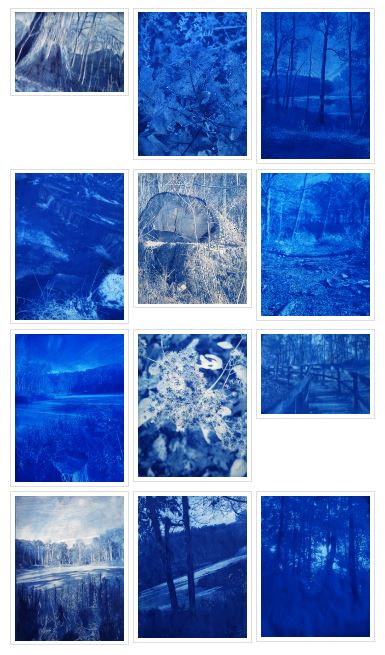Capturing Nature

Cyanotypes are one of the oldest photographic printing processes in the history of photography. The distinctive feature of the print is its shade of cyan blue, which results from its exposure to ultraviolet light. When the blueprint emerged, cyanotypes were traditionally used for reproducing the technical drawings of architects and engineers until the arrival of photocopy machines. Cyanotypes were first introduced by the astronomer, scientist, and botanist John Herschel in 1842. Although Herschel had discovered the process, it was the botanist and photographer Anna Atkins who first used the cyanotype to create a photographic album of algae specimens in 1843.
In October, 40 Drawing and Printmaking students embarked on an adventure to Miami Whitewater Forest, one of the Great Parks of Hamilton County, with Ms. Schorsch where they explored the Timberlakes and Oakleaf trails. Using images and artifacts captured from nature, students created a composition that demonstrated the creation of a space through a variety of value and texture changes. Students also considered the use of line in the creation of movement in the composition as a way of directing the viewer’s eye through the space. Images captured were transformed into negatives and exposed using sunlight and then manipulated with drawing media.



